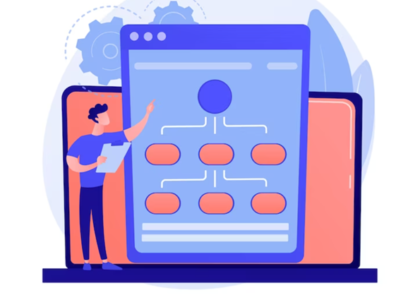The smartphone market is developing at a very fast pace. The models currently in use are many times faster than the flagships released just 4-5 years ago. Naturally, the developers of mobile applications take advantage of this, regularly updating their programs, and trying to use all the possibilities of technology, to offer great graphics and maximum performance.
The Concept and Definition
A mobile app is a special software that is developed for smartphones, tablets, and other mobile devices. Mobile apps are so simple that we can hardly think of a better definition. Typically, these programs are designed for iOS and Android.
Apps have made our lives easier, and we’ve reached a point where we can’t imagine work and leisure without them. Let’s take a look at how it all started.
The History of Mobile App Development
If we go back to the early days of mobile app design and development, we find that the first apps were calendars, calculators, and even games developed in the Java environment.
What is interesting is that the world’s first smartphone was released by IBM in 1993. It had features such as;
- a contact book,
- calendar,
- world time,
- calculator.
A few years later, in 2002, the next Blackberry smartphone was released.
This was one of the major advances in mobile application development that made the name of the humble company Blackberry Limited, also known as Research in Motion Limited (RIM), immortal. Their work led to the integration of the concept known as wireless email.
Interesting Facts About the First Cell Phones
The first Motorola DynaTAC models that went on sale were nicknamed “bricks” because of their bulky size and weight. These first cell phones were over 22.5 cm tall, not including the antenna, and weighed about 1.2 kilograms.
Early cell phones cost almost $4,000, which is about $10,000 in today’s dollars when adjusted for inflation. Despite its shortcomings, the technology appealed to wealthy business people, who saw it as an alternative to the pager.
Users had to charge their cell phones for at least 10 hours as the battery drained during the day. Users could make calls for 30 minutes a day, after which the cell phone would require charging.
Problems with the network and range were another obstacle, as they sometimes prevented callers from making calls even in the immediate vicinity.

The Beginnings of Cell Phones
In April 1973, it was on the 3rd of this month that Martin Cooper of Motorola first called Dr. Joel Engel of Bell Labs on a cell phone.
Just a couple of decades later, scientists were actively developing operating systems and mobile applications for these devices. IBM Simon’s research and development department introduced the first mobile application for smartphones in 1993.
Handheld computers, or PDAs, had the first EPOC operating system, developed by PSION. Released in the early ’90s, it was the first of the recognizable apps. The 16-bit EPOC system could run diaries and databases, spreadsheets, and word processors.
But future models were capable of running a 32-bit OS and were integrated with 2MB of RAM, allowing users to add additional applications through their software packages. This was a significant step forward.
Then came the whole era of the Palm OS. Developed by Palm Inc. in 1996, these systems were primarily designed for personal digital assistants and are known as the Garnet OS. Here you have a graphical touchscreen user interface, a solid set of basic applications, third-party C / C ++ applications, and much more.
Later, wireless application protocol (WAP) browsers were introduced.
A Markup Language for Wireless Devices
Developed by the WAP Forum, the markup language for wireless devices was specifically designed for systems that depended on XML and ran on WAP protocols.
It was simple and capable of running on low bandwidth mobile networks in the 90s, overcoming the existing limitations of HTML, a hypertext markup language too demanding of computing power.
Then came Java ME, J2ME, or JME – it was first introduced as JSR 68. It was later replaced by personalized Java, which became a favorite of many. No wonder why this programming language still exists. It was given different variations and forms for use in mobile devices.
In addition, CLDC could run on devices with 160KB to 512KB of memory and came with Java libraries that could run on virtual machines.
The Symbian operating system was the next step. Developed by Symbian Ltd, a joint venture between Ericsson, Motorola, Nokia, and PSION, it was an improved version of the PSION EPOC OS.
Until 2008, this interesting venture had a ubiquitous operating system capable of supporting about 250 million devices worldwide.
Nokia continued to improvise Symbian, and this software platform called S60 was implemented on various Nokia, Samsung, and LG phones.
Later, the modern smartphones we use today have evolved significantly, making people’s lives more pleasant and easier.
Conclusion
The changes have particularly affected the accessibility and convenience of apps. Think about what life would be like without the millions of apps around us, including social media, banking, health and fitness, gaming, travel and leisure, shopping, news, and so on.
The number of iPhone app downloads is at least 30 billion, followed by Android app downloads with 15 billion. Today there are game stores that add about 20,000 apps every month. Doesn’t that seem like a fantastic figure to you?





